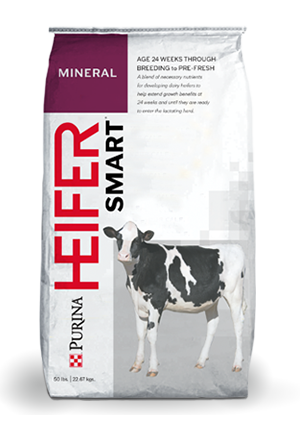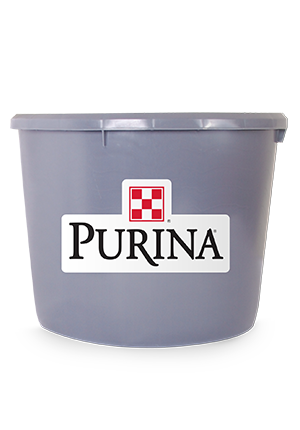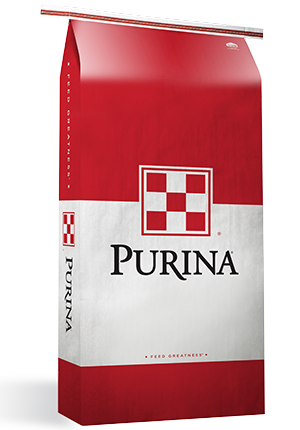
Is Your Herd’s Reproduction at Risk from the Heat?

When warm weather is on the horizon, it’s time to start monitoring the Temperature-Humidity Index (THI).
The THI accounts for the combined effects of temperature and humidity to assess the risk of heat stress. Research shows that cows producing more than 77 pounds of milk per day are negatively affected when minimum THI is greater than 65 or average THI is 68 for 17 hours per day. Furthermore, more recent research indicates reproduction is impacted when maximum THI is as low as 55.
Mitigating milk production losses is oftentimes the focus when we think about heat stress. However, research shows that reproduction is impacted at a THI much lower than is typically associated with heat stress losses.

The relationship between THI and early embryonic death was investigated in a research paper by Garcia-Ispierto et al., 2006. The aim of their research was to establish whether THI values from days 1 to 40 of gestation could be associated with pregnancy loss in dairy cows. Data from 1,391 pregnancies were evaluated and pregnancies were determined by trans-rectal ultrasonography. Maximum THI was used to evaluate heat stress and was calculated using the daily maximum ambient temperature and the minimum relative humidity. Figure 1 illustrates the pregnancy loss rates compared with ranges of maximum THI values during days 21-30 of gestation.
What is interesting in this data is that even at maximum THI values of between 55 and 59, there was already some pregnancy loss. It wasn’t until maximum THI values dipped below 55 that there was no observed pregnancy loss.
Researchers indicate that the likelihood of pregnancy loss increased by a factor of 1.05 for each unit increase in mean maximum THI from days 21-to-30 of gestation. The significance of these losses cannot be overstated. In addition to losing the pregnancy, dairy producers are losing time waiting until the next heat cycle.
THI values are a valuable tool for dairy producers and nutritionists to use when managing the negative effects of heat stress. However, researchers continue to learn more about the impacts of THI on dairy cows. Based on recent reports, it is clear that high producing dairy cattle are already affected at THI values much less than the traditional threshold value of 72. It is more likely that negative effects on production are occurring when the THI is 65 and negative effects on reproduction when THIs are as low as 55.
By knowing the THI thresholds where production and pregnancy loss start occurring, producers can implement strategies sooner to address the negative impacts of heat stress. For accurate THI values, its recommended producers measure THI values based on the conditions inside the barn, not the general weather report of the area.
Work with your local Purina Animal Nutrition representative to learn more about the tools available to track THI, along with nutrition and management strategies to mitigate the impact of heat stress.
The THI accounts for the combined effects of temperature and humidity to assess the risk of heat stress. Research shows that cows producing more than 77 pounds of milk per day are negatively affected when minimum THI is greater than 65 or average THI is 68 for 17 hours per day. Furthermore, more recent research indicates reproduction is impacted when maximum THI is as low as 55.
Mitigating milk production losses is oftentimes the focus when we think about heat stress. However, research shows that reproduction is impacted at a THI much lower than is typically associated with heat stress losses.

The relationship between THI and early embryonic death was investigated in a research paper by Garcia-Ispierto et al., 2006. The aim of their research was to establish whether THI values from days 1 to 40 of gestation could be associated with pregnancy loss in dairy cows. Data from 1,391 pregnancies were evaluated and pregnancies were determined by trans-rectal ultrasonography. Maximum THI was used to evaluate heat stress and was calculated using the daily maximum ambient temperature and the minimum relative humidity. Figure 1 illustrates the pregnancy loss rates compared with ranges of maximum THI values during days 21-30 of gestation.
What is interesting in this data is that even at maximum THI values of between 55 and 59, there was already some pregnancy loss. It wasn’t until maximum THI values dipped below 55 that there was no observed pregnancy loss.
Researchers indicate that the likelihood of pregnancy loss increased by a factor of 1.05 for each unit increase in mean maximum THI from days 21-to-30 of gestation. The significance of these losses cannot be overstated. In addition to losing the pregnancy, dairy producers are losing time waiting until the next heat cycle.
THI values are a valuable tool for dairy producers and nutritionists to use when managing the negative effects of heat stress. However, researchers continue to learn more about the impacts of THI on dairy cows. Based on recent reports, it is clear that high producing dairy cattle are already affected at THI values much less than the traditional threshold value of 72. It is more likely that negative effects on production are occurring when the THI is 65 and negative effects on reproduction when THIs are as low as 55.
By knowing the THI thresholds where production and pregnancy loss start occurring, producers can implement strategies sooner to address the negative impacts of heat stress. For accurate THI values, its recommended producers measure THI values based on the conditions inside the barn, not the general weather report of the area.
Work with your local Purina Animal Nutrition representative to learn more about the tools available to track THI, along with nutrition and management strategies to mitigate the impact of heat stress.




